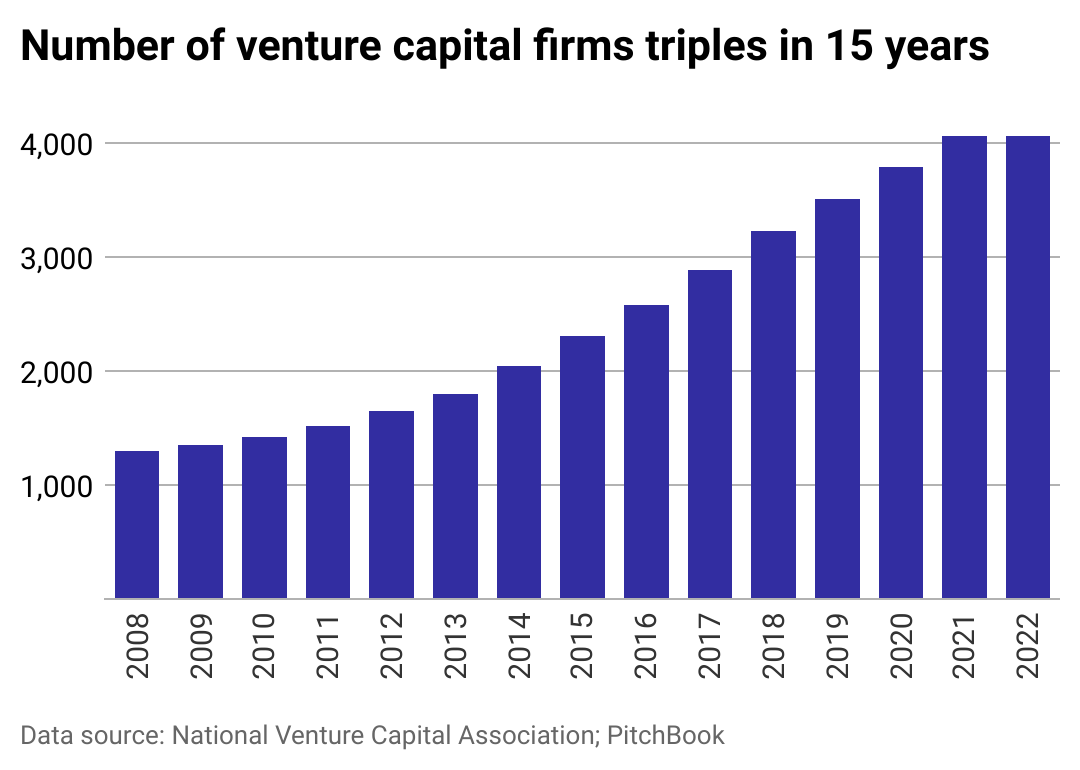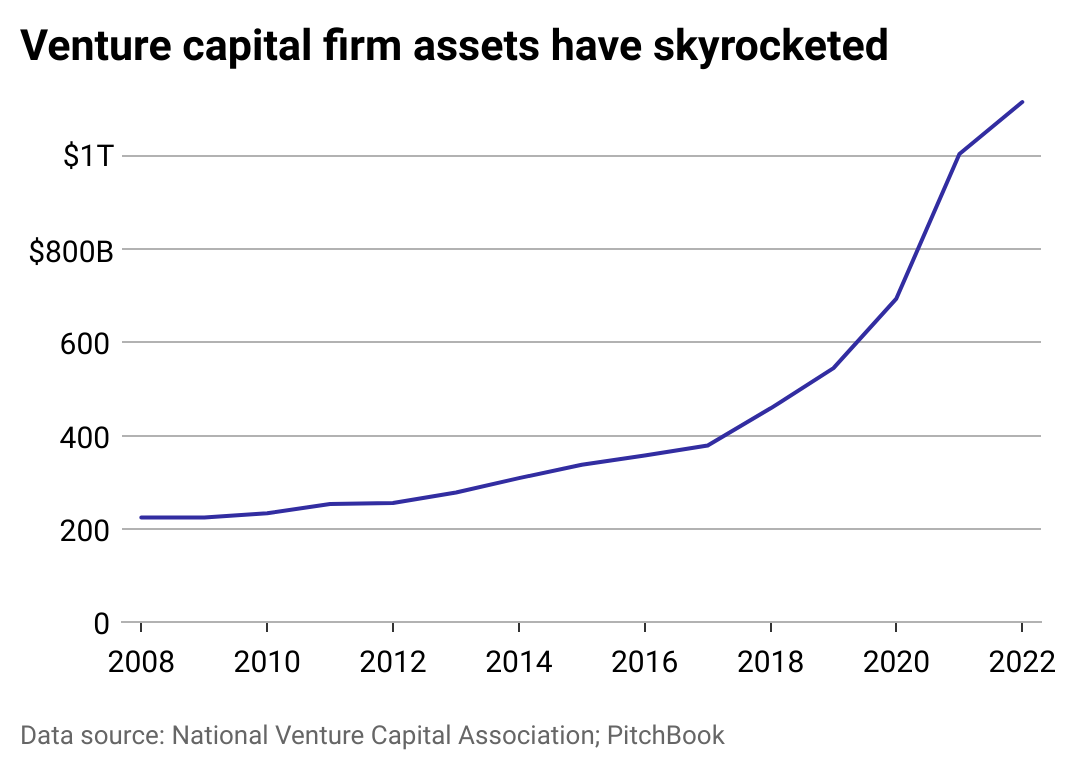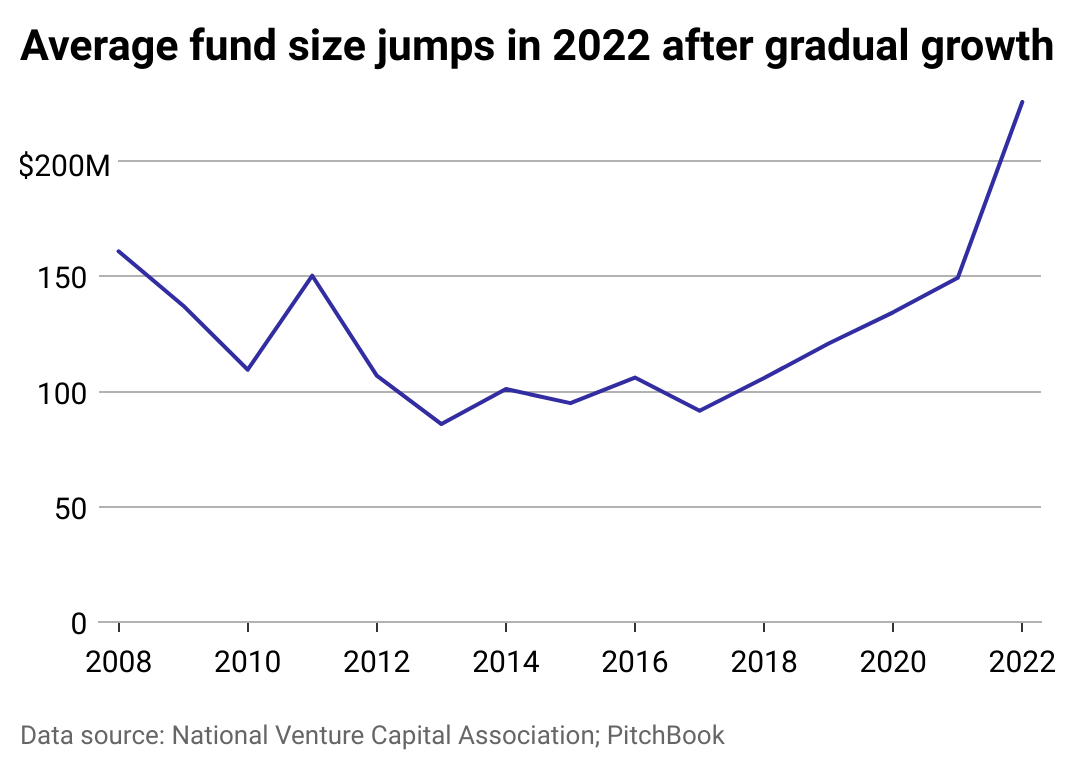
How US venture capital has grown in the last 15 years
This story originally appeared on Flippa and was produced and distributed in partnership with Stacker Studio.
How US venture capital has grown in the last 15 years
After a long positive run, venture capital enters 2024 buffeted by crosswinds.
The market has become choppier due to global pandemic aftershocks, including supply chain disruption, rising inflation, and workplace and productivity changes from remote work adoption.
Though the U.S. economy appears to be headed for a "soft landing," where restrictive monetary policy slows inflation and job growth without leading to unemployment spikes, the belt-tightening steps businesses took in anticipation of a widely predicted recession are squeezing the venture capital industry.
Because of those challenges, venture-backed startups failed at a record rate in 2023, a winnowing that comes after 15 years of pronounced growth for the industry, according to data from the National Venture Capital Association analyzed by Flippa. Venture capital funds are holding historic amounts of what is called "dry powder," or the amount of money VCs have raised but haven't invested yet, creating opportunities for entrepreneurs with compelling ideas and go-to-market strategies and the investors willing to stake them.
A venture capital fund pools the funds of investors to take high-risk and high-reward private equity stakes in startups and small to medium-sized companies with high potential for growth.
Within that broad definition, there are a number of variations. For instance, a fund can be put toward multiple financing rounds at various companies. Firms can have multiple funds under management. And larger funds are naturally able to do larger rounds of financing.
It can be an exciting, high-risk, high-reward opportunity.
With rising interest rates on loans, venture capital has become a more attractive funding option for startups. That creates new opportunities for founders, investors, and skilled workers in in-demand industries interested in working for groundbreaking startups. Venture capital is different from other kinds of funding that might be available to early-stage companies. Unlike a loan, venture capital isn't repaid. Instead the investor receives equity shares, with the hope they will multiply (considerably) in value. In exchange for this high rate of return, the investor also takes a high risk that the company will fail and they'll never get their investment back.
PitchBook predicts an increase in venture capital deal activity for 2024 over the year prior, but in a more cautious and investor-friendly way. Expect strong startups with strong ideas, teams, and go-to-market strategies to find ready funding, while startups that aren't as fit will fall behind. Startup accelerators will also take a stronger role, nurturing budding founders and sharpening their strategies before they enter the new fray.

More firms are getting into venture capital
Venture capital has recovered steadily from the global financial crisis. From 2008 to 2022, the number of venture capital firms increased from about 1,000 to a little over 4,000, a 300% increase.
The period saw a surge in the development of "seed funding," the initial funds raised in exchange for shares in the company, and it became an investment class in its own right. This expanded access in investing in the earliest stage of companies to a broader array of investors beyond traditional friends, family, and angel investors, catalyzing new growth and opportunities.
The industry saw the proliferation of new funds specializing in specific areas, such as software, biotech, and the environment. Venture capital firms also began creating multiple funds with different investment strategies, diversifying their portfolio and increasing revenue from management fees.

VC firms increase assets under management with added investment
Venture capital firm assets—which refer to the total value of everything a firm owns, including investments, intellectual property, office space, and bank accounts—have jumped considerably in recent years. The moderate growth that followed after 2008 began increasing in pace, noticeably in 2012, then more sharply upward starting in 2017.
The estimated value of venture capital-backed companies, known as valuations, rose consistently during this period, buoyed by a long period of low interest rates and high credit availability. The COVID-19 pandemic outbreak blunted the rate of increase, but it picked up again in the later quarters of 2020 and still remains elevated above historical levels.

Average fund size grew substantially in 2022
After five years of steady increases, in 2022, the average venture capital fund size, the amount of capital raised for investing, suddenly soared from $150 million to over $200 million.
This growth was propelled by several factors. One was the entrance of mega funds, or funds with $500 million or more in capital, backed by institutional and sovereign investors seeking bigger and more diverse investing opportunities.
Low interest rates made it easy for startups to get funding and get off the ground. The rise in the number of companies that successfully went public on the stock exchange, allowing investors to earn hefty returns, brought about a gold rush mentality of founders and investors chasing the same results.
Story editing by Ashleigh Graf. Copy editing by Paris Close. Photo selection by Ania Antecka.



